#Buying Guide
Prescription & Lenses
Learn about the lenses you can choose for your new pair, from refractive errors to prescription types. A short guide to help you learn how to read a glasses prescription so you can order your new set of eyeglasses as quickly as possible.
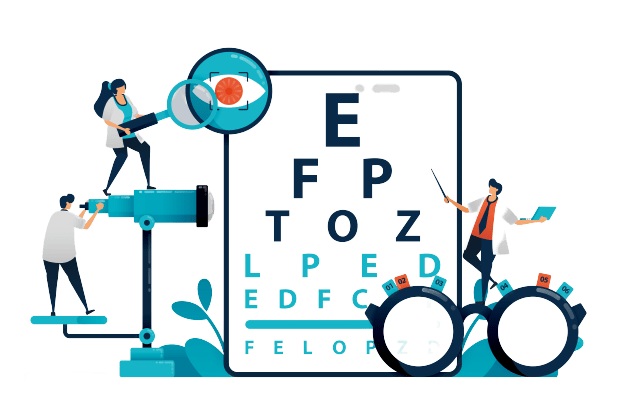
Explaining Eye Conditions
Refractive errors can affect our vision and eyes in a variety of ways. Some errors affect our distance vision, making distant objects blurry, and some affect our close up vision, making it difficult to read books and menus. Some errors affect both our distance and close up vision, leaving our vision blurry at any distance.

MYOPIA
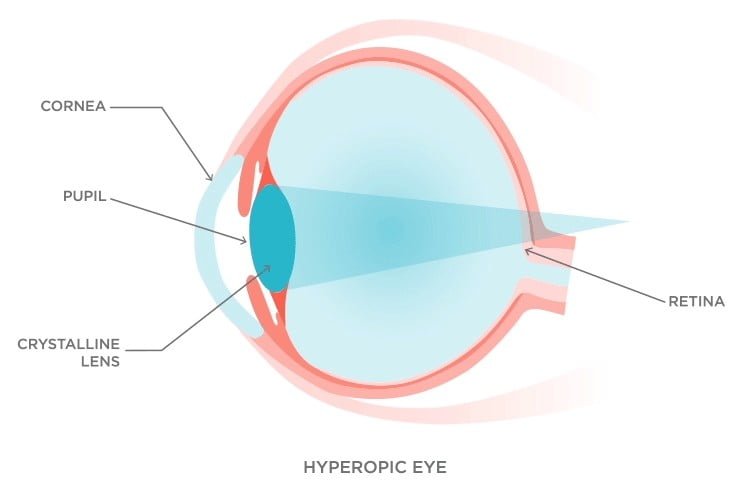
HYPERMETROPIA
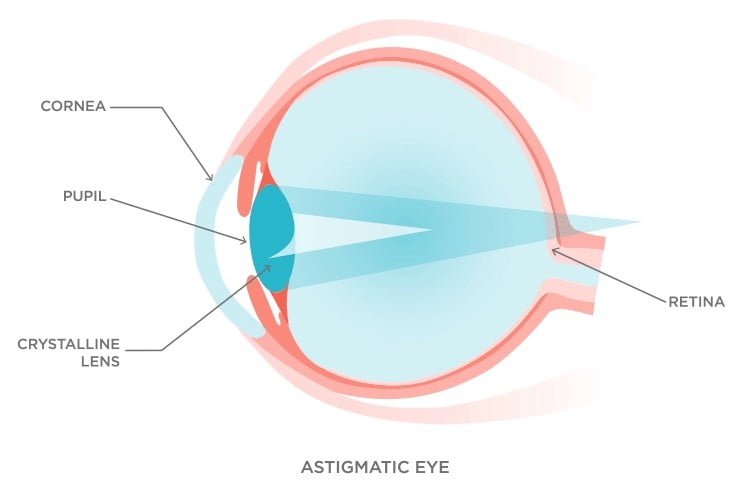
ASTIGMATISM
Astigmatism is mainly caused by an irregular curvature of the cornea. As a result, the image is not formed properly on the retina, but distorted according to the curvature of the cornea. Astigmatism may be combined with other eyesight problems such as hypermetropia or myopia.

PRESBYOPIA
Presbyopia is not a visual defect but a natural evolution of our vision. No one is born with presbyopia but we all develop it. The normally flexible lens of the eye loses elasticity, and its ability to focus on nearby objects. It affects both women and men from the early 40’s onwards.
Understanding Your Prescription
Reading eyeglass prescriptions doesn't require special training or a medical degree—we've broken it down and simplified everything to make your online ordering experience a piece of cake! But, if you don’t have the time to peruse the instructions, leave the prescription fields blank. You can upload your prescription or call in your order.
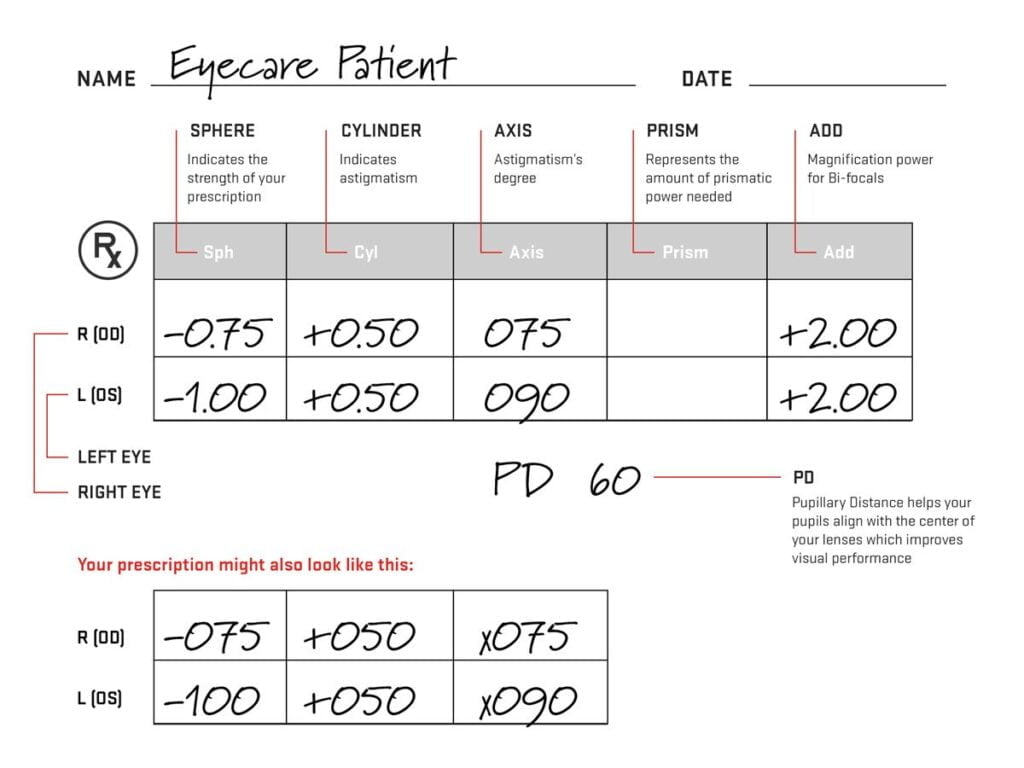
- O.D. stands for Oculus Dexter or Right Eye
- O.S. stands for Oculus Sinister or Left Eye
SPH. (or Sphere) number indicates if you have nearsighted or farsighted vision. It is measured in a unit called a diopter or, “D.” If you are nearsighted, this measurement will be a negative number with a ( – ) symbol. If you’re farsighted, this measurement is usually a positive number with a ( + ) symbol. The higher the number, the stronger the correction.
CYL (or Cylinder) indicates astigmatism, a condition where the cornea is irregularly shaped and not perfectly sphere in shape causing blurred or distorted vision. It also tells the lens strength needed to fix it. If this column is blank, it means you don’t have an astigmatism.
AXIS reflects the exact orientation of your astigmatism, measured in degrees from 1° to 180°. It is always present along with your CYL prescriptions. If your prescription holds a CYL value and no axis or vice versa, it is incomplete.
ADD is added magnifying power in the lower part of a multi-focal lens. It’s used to correct presbyopia which is the inability to focus on close objects. If you need a bifocal or progressive lens, there will be an ADD
P.D. (or Pupillary Distance) is an important measurement from the center of one eye to the center of another. This is used to mark the exact optical center in your lenses which further helps to view things properly and without any eye strain.
If the P.D. is missing from your prescription, find out how to measure in next section.
Measure your Pupillary Distance
Your PD is an important part of your glasses prescription that makes sure you’re looking through the best spot in your lenses for clear vision. It is recommended for all kinds of prescription lenses, but compulsory in Bifocal/ Progressive Lenses.
Pupillary Distance (PD) the distance between the centres of your pupils (the black bits in the middle of the eyes).
If your eye doctor won’t provide you your PD, don’t worry! Have a look through our step-by-step guide that tells you how you can easily measure your PD at home.
How to Calculate your Pupillary Distance (PD)?
Tools Needed
Millimeter Ruler
Pen / Marker
Mirror
Measuring your PD :

Step 1
Stand about 8 inches or 20 cm away from a mirror.
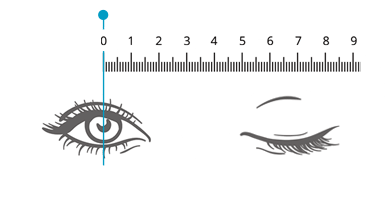
Step 2
Hold the ruler over your eyes. And keep the zero over your left pupil.

Step 3
Close your left eye, and open your right eye while looking straight. The number directly over your right pupil is your PD.
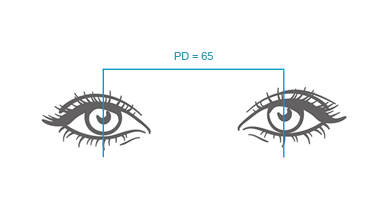
Step 4
Just to be sure, measure a few more times to make sure you get the same number. You want it to be accurate.
For reading glasses :
Follow the same method but take away 3mm from the distance number. So, if your measurement is 60mm, then your PD for reading glasses will be 57mm.
Print PD Ruler
If you have a safe ruler without sharp metal edges, you can use one at home. Or, print out our ruler. Just make sure that when you scroll through your printing settings, you use either “No scale” or “actual size” when printing. Otherwise, the measurements can get distorted. Once printed, you’ll have a ruler about the size of an ID that fits in your wallet.
Type of Lenses
We all have unique vision correction needs with varying degrees of near or farsightedness, and astigmatism. Today’s lenses are built around your prescription and the way you live to give you a personalized view through your eyeglasses.
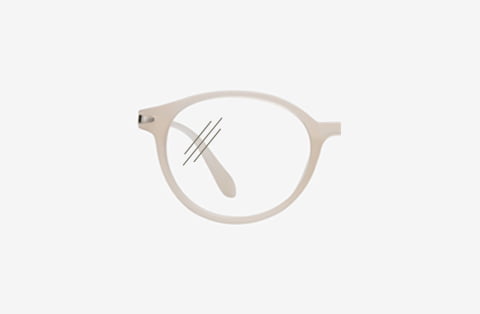
SINGLE VISION LENSES
Single vision lenses are the most common type of eyeglass lenses. They have the largest field of vision because they only correct vision at one specific distance (either far or near). If you are nearsighted farsighted, or have astigmatism, you’ll most likely be prescribed single vision lenses
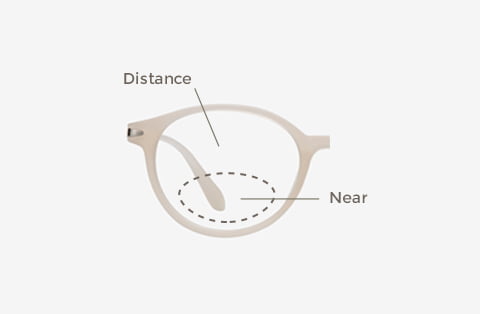
BIFOCAL LENSES
Bifocal literally means ‘two focuses’, the lenses combine two different prescriptions. Usually, one area will be for distance, with a lower segment for near vision, such as reading. These two sections are divided by a visible line or curve. They are commonly used by people that have a condition called ‘presbyopia’ – when the eye loses its flexibility and can’t focus on objects.
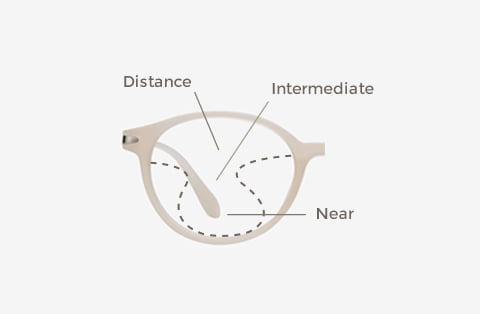
PROGRESSIVE LENSES
Progressive lenses, are lenses that have a range of different prescriptions over the lens surface. Clear vision across any distance, near, far or intermediate with smooth transition – In multifocal lenses, there is a gradual alteration in optical power from top half to the bottom. Unlike bifocals, there isn’t a clearly defined segmentation on the lens. It usually takes 7 to 8 days for your eyes to adapt to multifocal lenses.
Type of Lens Material
There are different materials that you can have your prescription lenses made from.
PLASTIC
These standard or “regular” lenses, made from a plastic named CR39, are recommended for relatively low prescriptions. In addition, they are also relatively thick lenses. If you are looking for an economical option for your lenses and have a weaker prescription, these lenses may be the right choice for you.
POLYCARBONATE
These lenses are thinner and lighter than regular plastic lenses and can handle stronger prescriptions. Polycarbonate lenses are lightweight, impact-resistant, and are less likely to fracture than regular plastic lenses. They are also great for rimless and semi-rimless frames.
HI-INDEX
High-index eyeglass lenses are the right choice if you want thinner, lighter lenses and eyeglasses that are as attractive and comfortable as possible. High-index lenses are especially recommended if you have a strong eyeglass prescription
Type of Coatings & Enhancements
Now that you've narrowed down your lens type & material, check out lens enhancements that'll give you a little extra vision protection, and improved lens performance. Think of them as your lens' BFFs.

Scratch Resistant
Scratch resistant coating for eyeglasses is a coating that is applied to lens surfaces. It helps to prevent minor scratches that can easily happen to a regular lens. These minor scratches can damage the surface of the lens and impair vision. An anti-scratch coating acts as a protective layer thus making the lenses more durable.

Anti Reflective
Glare or reflections can be annoying and in some severe cases can decrease visual acuity. To improve both the vision through the lenses and the appearance of the glasses, an anti-reflective coating is applied. This technologically advanced coating helps to significantly reduce reflections, giving you clearer vision.
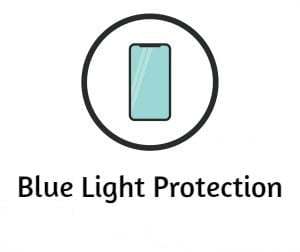
Blue Light Protection
The filter on this advanced coating reduces the amount of blue light entering the eye. Blue light is emitted by digital devices such as computers, tablets and mobile phones. Lenses with Blue Light protection coating have all the benefits of our Anti reflective coating, along with enhanced scratch resistance and anti-static technology which means the lenses attract less dust.

Photochromatic
Photochromic lenses darken on exposure to sunlight (UV Light), becoming clear again when there is no natural light. This transition from clear to dark depends on the strength of the Ultra Violet light present, with the lenses being their darkest in bright sunlight. The big advantage of photochromic lenses is that they allow you to see comfortably in all conditions, without the need to switch and change your glasses.
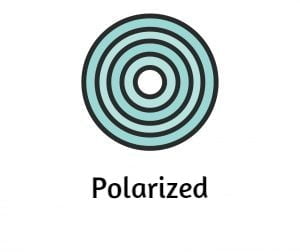
Polarized
Polarized lenses are used in sunglasses to reduce glare from reflective surfaces such as the surface of a lake, snow or the hood of a car. They accomplish this feat through a process called polarization. If you drive or bike frequently, and travel along bodies of water or slick roads, you could greatly benefit from polarized coating. Though it may reduce the visibility of LCDs and LEDs screens.
Still Searching for your Perfect Pair ?
Start browsing all eyeglasses frames, then select your lenses.

